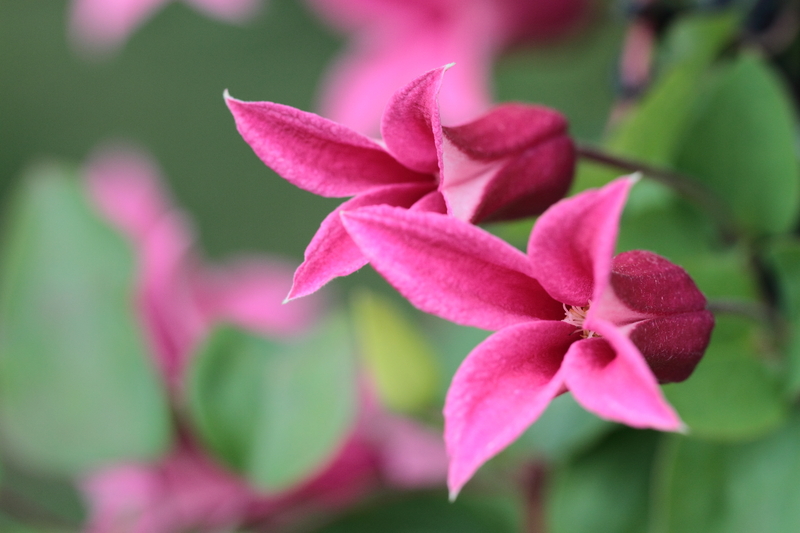Shaping Gardens with Inventive Hedge Trimming Techniques
Posted on 21/08/2025
Shaping Gardens with Inventive Hedge Trimming Techniques
Gardens are living canvases, and hedges play a vital role in framing, defining, and beautifying outdoor spaces. Inventive hedge trimming techniques not only keep your garden looking neat and healthy but also allow for creative expressions that can turn any landscape into a personal paradise. This comprehensive guide explores various ways to shape gardens with innovative hedge trimming strategies, offers practical advice, and provides actionable tips for gardeners of all experience levels.

Why Creative Hedge Shaping Matters
Hedge trimming is more than a simple garden chore; it's an art form that significantly impacts a garden's aesthetics and functionality. Properly maintained hedges can:
- Create visual interest through unique shapes, patterns, and topiaries
- Provide privacy and shelter from wind and noise
- Enhance garden health by promoting air circulation and sunlight penetration
- Define spaces and pathways, making gardens more organized and inviting
Whether you have formal boxwood borders or sprawling mixed hedges, mastering inventive hedge trimming techniques will enable you to sculpt your ideal garden.
Understanding Different Types of Hedges
Before reaching for your shears, it's essential to understand the types of plants in your garden, as hedge trimming methods will differ depending on the species, growth habit, and purpose:
- Formal Hedges: Usually composed of dense, small-leaved shrubs like boxwood, privet, or yew. They respond well to regular, precise shaping.
- Informal Hedges: These feature flowering shrubs, evergreens, or mixed species. Informal hedges benefit from a looser approach, focusing on natural shapes.
- Mixed/Deciduous Hedges: A blend of shrubs that may require individual attention to flower or fruit optimally.
Essential Tools for Inventive Hedge Shaping
Tools are a gardener's best friend. Having the right equipment ensures precision, health, and safety when shaping hedges. Here's what you'll need for creative hedge trimming:
- Manual Hedge Shears: For detailed work and smaller shrubs
- Powered Hedge Trimmers: Ideal for larger, established hedges
- Pruning Loppers: For thicker branches
- Topiary Frames: Metal or wire forms to guide intricate shapes
- String and Stakes: To map out straight lines or curves
- Protective Gear: Gloves and safety glasses for safe trimming
Tip: Always keep your tools clean and sharp to avoid disease transmission and ensure a crisp, clean cut.
Classic Hedge Trimming Techniques
Box and Rectangle Hedges
The box hedge is a time-honored classic, synonymous with formal gardens. To achieve crisp, even lines:
- Use string tied between stakes to mark the desired height and width
- Trim the sides vertically, then level off the top
- Step back periodically to check for symmetry
Curved and Wavy Edges
For a softer, inviting boundary, experiment with curved lines. Curved hedges flow naturally and can guide guests through your garden.
- Sketch your desired curve with chalk or use a hose to lay out the shape
- Trim slowly, removing small amounts at a time to avoid mistakes
- Keep the top slightly narrower than the base to allow sunlight to reach lower branches
Inventive Hedge Trimming Techniques
Topiary Art: Sculpting Living Statues
Topiary--the art of shaping plants into geometric or whimsical forms--is the pinnacle of inventive hedge work. Popular shapes include spirals, balls, cones, animals, and abstract forms.
- Starting out? Use simple shapes like spheres or cubes; these provide instant impact and are easier to maintain
- Frame support: Topiary frames guide complex shapes. Place the frame over your hedge and use it as a reference as you trim
- Patience is key: Topiary requires annual maintenance and several seasons for intricate designs to fully take shape
For more advanced gardeners, let your imagination run wild. With time and skill, hedges can become dragons, peacocks, or even human figures!
Cloud Pruning: Artful Asymmetry
Cloud pruning--niwaki in Japanese--is a technique wherein hedges or shrubs are shaped into soft, billowy mounds, mimicking clouds. This method adds sophistication, movement, and a touch of Zen to any landscape.
- Start by identifying the main branches of your shrub or hedge and remove unwanted shoots
- Trim foliage into rounded, cloud-like pads at varying heights
- Leave space between clusters for a sense of lightness and depth
Cloud pruning works best on species like boxwood, yew, or holly, but can be adapted to almost any evergreen shrub.
Layered and Tiered Hedges
Bring visual drama to your landscape by creating multi-level hedges. Tiering involves planting or shaping hedges at different heights for a staircase effect, perfect for sloping gardens or as focal points.
- Choose species with varying growth habits and colors for maximum contrast
- Plant smaller species in front and progressively taller ones behind
- Maintain clean horizontal lines or gently undulating tiers
Textural Contrast and Mixed Hedges
Mixing different plant species lets you play with color, leaf size, and bloom time. This technique produces year-round interest and a dynamic backdrop for other plantings.
- Combine evergreens and deciduous species to balance structure and seasonality
- Alternate trimming schedules to respect each species' unique growth and flowering patterns
- Foliage shapes--from glossy broadleaves to delicate filigreed textures--create striking variety
Advanced Hedge Trimming Tips
Marking Patterns and Symmetry
Complex designs and patterns require careful planning. Mark guides for your design using string, stakes, or chalk. Measure and mark regularly as you trim to ensure impeccable symmetry and balance throughout your hedge.
Growth Control and Rejuvenation
Over time, even the most inventive hedge needs restorative care.
- Renovation pruning rejuvenates old, overgrown hedges--cut back hard in early spring and allow new shoots to emerge
- For evergreens, never cut into dead wood (except yew, which recovers well from hard pruning)
Maintenance and Seasonal Care
- Trim up to two to three times per season for formal hedges; informals may need just one annual cut
- Don't trim during extreme drought or frosty periods to avoid stressing plants
- Feed and mulch after heavy pruning to encourage healthy regrowth
Common Mistakes to Avoid with Inventive Hedge Trimming
- Neglecting the base: Never allow the top to overhang and shade lower branches--keep the base wider for even light exposure
- Trimming too late or too early: Time cuts according to your hedge species' growth cycle to prevent bare patches and encourage blooming
- Over-trimming: Avoid taking off too much at once, as it can stress the plant and cause dieback
- Ignoring tool maintenance: Blunt shears crush rather than cut, leading to disease and poor regrowth
Best Hedge Plants for Creative Shaping
Not all species are suitable for every shaping style. Below are some top choices for inventive hedge trimming techniques:
- Boxwood (Buxus): Excellent for precise formal and topiary shapes
- Yew (Taxus baccata): Ideal for both classic and imaginative designs, including spirals and cloud pruning
- Privet (Ligustrum): Fast-growing and adaptable for both formal and informal styles
- Holly (Ilex): Decorative foliage, responds well to shaping, with an added benefit of berries in winter
- Lonicera nitida: Compact, fast-growing, and perfect for intricate topiary or low hedging
- Photinia "Red Robin": Colorful spring growth adds red highlights to creative shapes
- Beech and Hornbeam: Good for taller, semi-formal, and mixed hedges

How to Get Started with Inventive Hedge Trimming
- Choose Your Design: Start simple if you're new--straight lines, gentle curves, or basic spheres
- Study Your Hedge Species: Learn growth habits, optimal cutting times, and regrowth speed
- Prepare Tools: Sharpen blades, clean off residue, and check power tools for safety
- Mark Out Your Pattern: Use string or forms to lay out your design
- Trim Gradually: Remove small amounts and step back frequently to assess progress
- Maintain Regular Care: Prune, feed, and water as needed throughout the season
Conclusion: Express Yourself with Inventive Hedge Trimming Techniques
Your garden is an extension of your personality, and inventive hedge trimming techniques are a wonderful medium to express your creativity. Beyond aesthetics, these practices enhance the health, privacy, and structure of your outdoor space. Whether you prefer formal lines, whimsical topiaries, or billowy clouds, there's a hedge trimming style for everyone.
Remember, successful hedge shaping combines the right plant, technique, and a little patience. Experiment with different methods, stay on top of maintenance, and enjoy watching your garden transform--one inventive trim at a time.
With the right hedge trimming techniques, your garden will become a living masterpiece admired for years to come.

